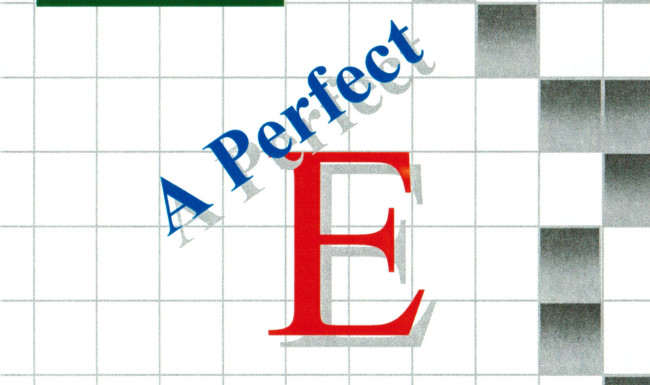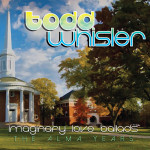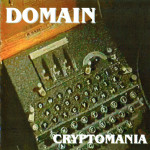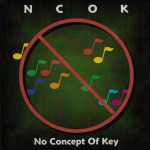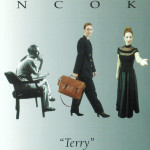Album Notes – A Perfect E
A Perfect E recorded April – June 1996
I met Leyth Mulla in San Diego in late October or early November of 1987. We were introduced by a mutual friend who said the only thing either one of us ever wanted to do was talk about music. After meeting, we found we had a lot more in common like we were both amateur guitarists and budding songwriters. We quickly began collaborating on writing original music. Although we both loved hard rock and heavy metal, we gradually gravitated to acoustic music as it was much easier to rehearse and record and we were both very fond of both playing and hearing it. By early 1992, we had assembled 9 songs of acoustic instrumental music in which I played rhythm and Leyth played lead guitar. We recorded demos on my 4 track recorder which was better than nothing but only just. Leyth moved to Tucson in late 1992 and I followed him in early 1994. In 1993 with time on his hands, Leyth composed another twelve songs for a second prospective acoustic instrumental album. The cost of living in Tucson was a fraction of what it had been in San Diego and by 1996 we had saved enough money to afford booking studio time and recording our songs. Leyth hauled out the Tucson phone book and called every studio in town. We only considered the studios who called back. We visited one of them, Summit Recording and although far from overwhelmed by the engineer or the facility, decided to give it a try. However, I forgot the name of the studio and instead settled on Allusion Studios who in fact had returned our call but which we had not visited – a fact I discovered only when I drove there for an initial meeting and realized I had never been there before! Leyth and I started by recording the song we had been least able to capture adequately on my 4 track recorder, a song called Disintegration. The first half of the song was clumsy and hesitant, the second half was everything we’d hoped it could be. It was enough for us to commit to recording an entire album with Jim Pavett at Allusion Studios. The material was comprised of 8 of the 9 songs from our first album (Sweet E, Always Winter, Cycles, One Step Back, Happy Hour, Barricades, Sleepless and Disintegration) plus seven songs Leyth had written for the second album (Separate Shores, Salty Logic, In A Sense, The Naked Eye, I Am Domain, Belonging and Twilight) rounded out with two new tracks that were written almost by accident just prior to recording (False City and Silent Battles).
My memories of this time are filled the the incredible sensation of actually hearing what he and I could only imagine. After suffering through my inconsistently recorded and equally inconsistently mixed demos, it was pure delight to hear a real engineer record them with top notch equipment. Even something as simple as doubling a rhythm guitar and panning it (spreading the sound out between the two speakers) brought giant smiles to Leyth’s and my faces. This was also something of a disservice as we were too easily satisfied – just how the guitars sounded was enough and some of the songs suffered from over length and repeating chordal ideas without developing the underlying emotional context. Nevertheless, I still remember sitting in the living room of Leyth’s house in Tucson listening to our first professionally recorded statement start to finish, all 74 glorious minutes and feeling such a sense of accomplishment and joy. A Perfect E remained in nearly constant rotation in the CD player in my car and before long, Leyth and I were planning the successor album.
There was a metal support pole in the middle of the old Allusion Studios – it hadn’t been designed to be the live room in a studio and striking it generated a sound which was very close to a note. Jim at one point asked which note it was closest to and I found it matched nearly exactly to the note E. “It’s an E,” I said. “A perfect E.” Perfect meaning natural. That stuck as the album title and also inspired the opening track Suite E – a play on the word sweetie.
- Suite E was originally 10 minutes long but during recording, we agreed it should only be half that length.
- False City’s name came from the pre-chorus which leads the listener to think all is well but that conclusion is wrong or, as Leyth said during rehearsal, “false city.”
- Silent Battles was a fairly ridiculous poem written by a mutual friend and coworker that Leyth somehow put to music. (example: As I lay you down in fields of manna dew). It is also an example of a nearly 4 minute song which really only has 2 minutes of music. We had two good ideas, we needed a third.
- Happy Hour so named because it was uptempo and completely major key had some very bad clapping from Leyth and me – my hands hurt after the second take. Good idea, poor execution.
- Salty Logic has always been a favorite track of mine – I thought Leyth was crazy when he stopped the song and completely changed melody and character. Now I view that midsection as brilliant – it introduces this relaxed, open theme of pure love and romance into a song that otherwise is claustrophobic and hectic.
- Barricades which is the only song I am credited with cowriting as the main theme was something I was fooling around with one day in the apartment Leyth and I shared in San Diego. Leyth interrupted his studies (he was pursuing his MBA at San Diego State at the time), opened the door to his bedroom, said, “Remember what you’re playing because we’re going to do something with it” and then closed his door and went back to work. Jim had a little keyboard program (a synth patch he called it) and Leyth was able to program the aching and yearning orchestration in the choruses that still breaks my heart to this day.
- In A Sense was a play on the word innocence and is another two idea song that we are able to make interesting by playing it two different ways – finger picked and then strummed.
- On these albums, there is always a song that I don’t really get musically but which I play to accommodate Leyth and The Naked Eye is that song on A Perfect E.
- The absurdly dramatic I Am Domain, whose title is a play on the popular 90s catchphrase “I am da man,” contrasts bombastic minor chords with subtle finger picked major key ones.
- When I listened to Belonging I wanted to give it the emotion it most strongly suggested to me which was longing. “No,” Leyth said with his typically wicked grin, “Belonging.” Which is the antithesis of what it is about.
- Disintegration is one of the few songs we’ve ever played in an alternate tuning – the high E string is tuned down to a D. It’s also one of the few songs where Leyth has consistently played the same core melody.
- And the to close the album, Twilight a completely serene, pastoral and resolved piece of music that belies the turmoil that characterizes most of the rest of the album.


